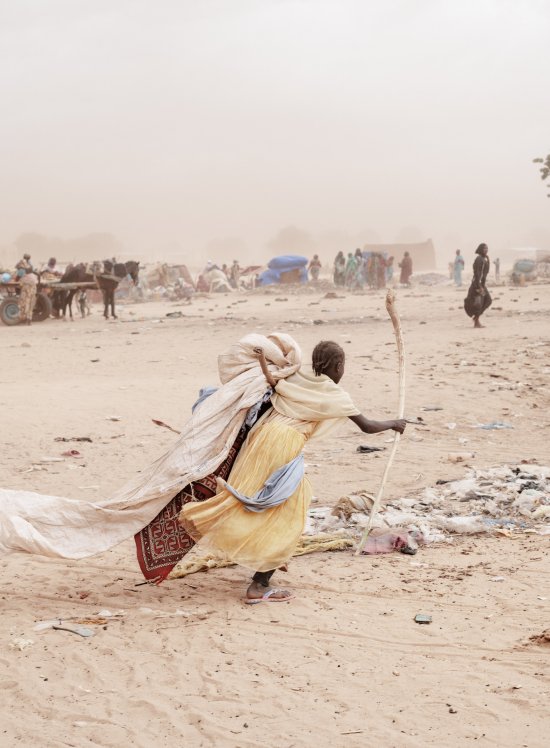
Photographer Nicolò Filippo Rosso documented his recent trips to a refugee camp in Adré.
Adré is supposed to be a town of transition. Perched on the border between Chad and Sudan, the city, which was initially used for cross-border trade, has now become the passing point for people escaping civil war and famine in what some diplomats have called the “worst humanitarian crisis in the world.”
More than 600,000 refugees have reportedly fled from Sudan to Chad in the last 16 months, meaning the neighboring country has seen more Sudanese refugees in one year than the previous 20 years combined, many of which have settled in makeshift borders, per remarks made by Linda Thomas-Greenfield, the U.S. ambassador to the United Nations. Another 10 million people remain forcibly displaced within Sudan since the internal political conflict began in April 2023.
[time-brightcove not-tgx=”true”]The newly-arrived families, mostly women and children, are entirely reliant on the aid of humanitarian groups, but in order to receive such assistance people must first wait their turn to be registered, which can take days, says Nicolò Filippo Rosso. A documentary photographer, Rosso visited refugee camps in Chad earlier in the summer, during trips with the United Nations High Commissioner for Refugees (UNHCR) and the World Health Organization (WHO).

Rosso recounts meeting one pregnant woman who had recently arrived at the refugee camp in Adré with her children and was on the verge of giving birth. Sharing her plight, the woman told him that her children were exhausted from walking, had high temperatures, and were not eating properly.
The town of Adré is largely overwhelmed. “I’ve seen a lot of things related to migration in many places, but this was the first time that I really felt that it couldn’t be worse than that,” says Rosso. “There is a lot of intervention from NGOs and from United Nations agencies, but it’s not complete because Adré is so close to the border that it is unsafe because there are gangs raiding the camps at night, and raping women and girls, and there is a lot of traffic of weapons.”
Even so, there have been several obstacles to distributing aid. Adré was closed off to international aid for six months, though it was announced on Aug. 15 that the embargo had been lifted. In June, the UNHCR said they only received 10% of the requested $214.8 million in aid necessary to help refugees at the border. The ask was made just prior to the rainy season, which typically lasts through September, and could exacerbate the existing crisis and cause outbreaks of waterborne diseases, according to the UNHCR.

Rosso, who himself contracted malaria, pneumonia, and COVID-19, says it’s very common to get these diseases. “The point is that you can cure malaria, you can cure COVID, but it’s open [defecation]. There is no sanitation, so the condition[s] people are living in is bad,” he says.
The photographer, who has documented other migrant crises in the Americas, typically composes black-and-white work, but has used color in the project to better encapsulate the “dignity that the Sudanese refugees have and their openness to each other, to others.”
“These women who are alone and [have gone] through violence of all kinds are there with their children maintaining pride,” Rosso says. “Color also is full of details that sometimes can distract you from the pain.”













